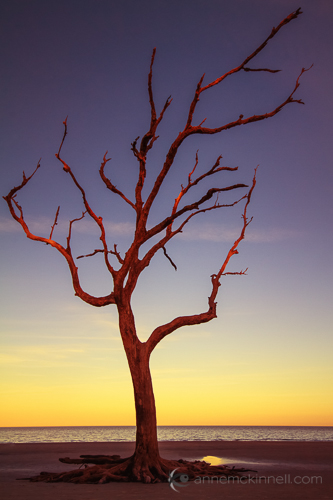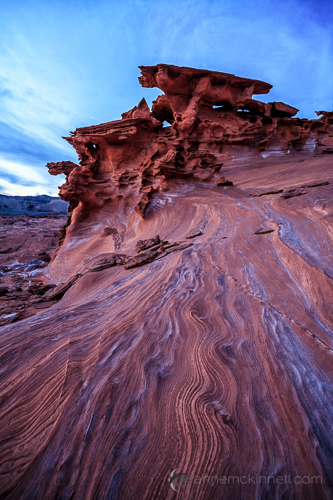When you are out in the field and you’re not sure if your the image you are making is any good, go through this quick mental checklist to see if your image contains these four essential ingredients.
1. Good Light
Light is by far the most important element of a landscape photograph. A photograph of a stunning location taken in harsh mid-day light will fall flat. A photograph of a boring location taken at that perfect moment when the light is magical will turn into a unique and memorable photograph.
I don’t actually believe that there is any kind of light that is inherently bad. You just have to know what to do with the light conditions that you are given.

The golden hour light of sunrise and sunset are usually a favourite time for photographers. My favourite time is the blue hour: twilight. It’s hard to go wrong with these two types of light.
When you have a day with bright harsh sunlight, take advantage of the opportunity to look for interesting shadows.
The white sky of an overcast day is an excellent time to photograph close-ups.
And what about those stormy days? Those can be the best of all with the dramatic clouds that accompany a storm.
2. Main Subject
The next thing is to make sure you have a main subject. That may sound pretty obvious but keep it in mind. You may find yourself, as I sometimes do, making an image of some general landscape without a clear subject. It’s just some land with some trees and maybe some water. You need to decide what the subject is and that will help you make an image that is more compelling.

When I get to a location I like to think of what it is about that place that grabbed my attention and I make that the main subject. That’s not to say you cannot then turn your attention to another main subject later, but if you have too many subjects in your scene, none of them with be the main subject and your image will be too general to be interesting.